Mr. Williams is reading the book, Caps for Sale, about a peddler and some monkeys, to his kindergarten class. He recognizes that the book presents a great opportunity to practice addition and subtraction, as the monkeys take away and give back some of the 11 caps that the peddler is trying to sell. Today, he decides to focus on different problem types. Instead of just working on “result unknown” problems, he is going to challenge his students by also asking some “change unknown” and “start unknown” problems.
As you know, by definition, adding is combining numbers, or sets of objects, to make a larger number or a larger set of objects. Subtraction, of course, is the inverse of addition.
There are three ways that we see children’s abilities in addition and subtraction grow during the kindergarten year. These are:
• The difficulty of the problem types they are able to solve
• The complexity of the strategies that they use to solve problems
• The size of the numbers they are able to work with
First, let’s explore, the difficulty of the problem types children are able to solve:
 When students are first beginning to add and subtract, they typically work with the easiest problem type called a “result unknown” problem, where we know the original number, and we know the amount that is added (or taken away), but the result is unknown. So, in our example above, Mr. Williams might ask his class the following, “If the peddler had 5 caps and the monkey gave back 6, how many would he have altogether?”
When students are first beginning to add and subtract, they typically work with the easiest problem type called a “result unknown” problem, where we know the original number, and we know the amount that is added (or taken away), but the result is unknown. So, in our example above, Mr. Williams might ask his class the following, “If the peddler had 5 caps and the monkey gave back 6, how many would he have altogether?”
 The second problem type is a “change unknown” problem where the original amount is known and the result is known but the amount to add (or subtract) is unknown. Here Mr. Williams might ask the following, “The peddler has 4 caps on his head, but he has 11 altogether. How many caps are the monkeys hiding?”
The second problem type is a “change unknown” problem where the original amount is known and the result is known but the amount to add (or subtract) is unknown. Here Mr. Williams might ask the following, “The peddler has 4 caps on his head, but he has 11 altogether. How many caps are the monkeys hiding?”
 The third type is “start unknown” where the result is known and the amount to be added or subtracted is known, but the “starting” number is unknown. Mr. Williams asked his class the following, “The peddler had some caps, then the monkeys gave him 3 more. Now he has 11. How many did he start with?”
The third type is “start unknown” where the result is known and the amount to be added or subtracted is known, but the “starting” number is unknown. Mr. Williams asked his class the following, “The peddler had some caps, then the monkeys gave him 3 more. Now he has 11. How many did he start with?”
Across the year, you have seen students’ ability to solve different problem types grow. In the beginning of the year, they were able to solve only result unknown problems. But, by the end of the year, students will be able to use their growing computation skills to answer change unknown and start unknown problems. It’s important to note that students might still rely on concrete representations and manipulatives to help them out.
Secondly, let’s look at the complexity of the strategies students use to solve problems:
In this VIDEO, a teacher is working with a student on a change unknown problem. She shows him 3 bears and tells him that there are 6 altogether. She wants him to figure out how many bears are hiding in the cave. Watch how the teacher supports this student by giving him manipulatives to use and using her fingers. The student struggles with the first problem, but in the second problem, we see him use several strategies to come up with the correct answers. Across the school year you have likely seen your students increase their repertoire of problem solving strategies.
Lastly, consider the size of numbers your students are currently working with:
And now, think back to September and your students’ capacity for working with numbers. Over these many months in your classroom, your students have grown in their ability to work with larger and larger numbers which will continue as they transition into first grade.

Click HERE to access the comprehensive VKRP Computation guide that includes even more information about children’s development of computation skills, along with strategies and activities to use to support their development.
More questions? VKRP provides support via the online chat feature when you are in the system, via email vkrp@virginia.edu, and via toll free 866-301-8278 ext. 1.

